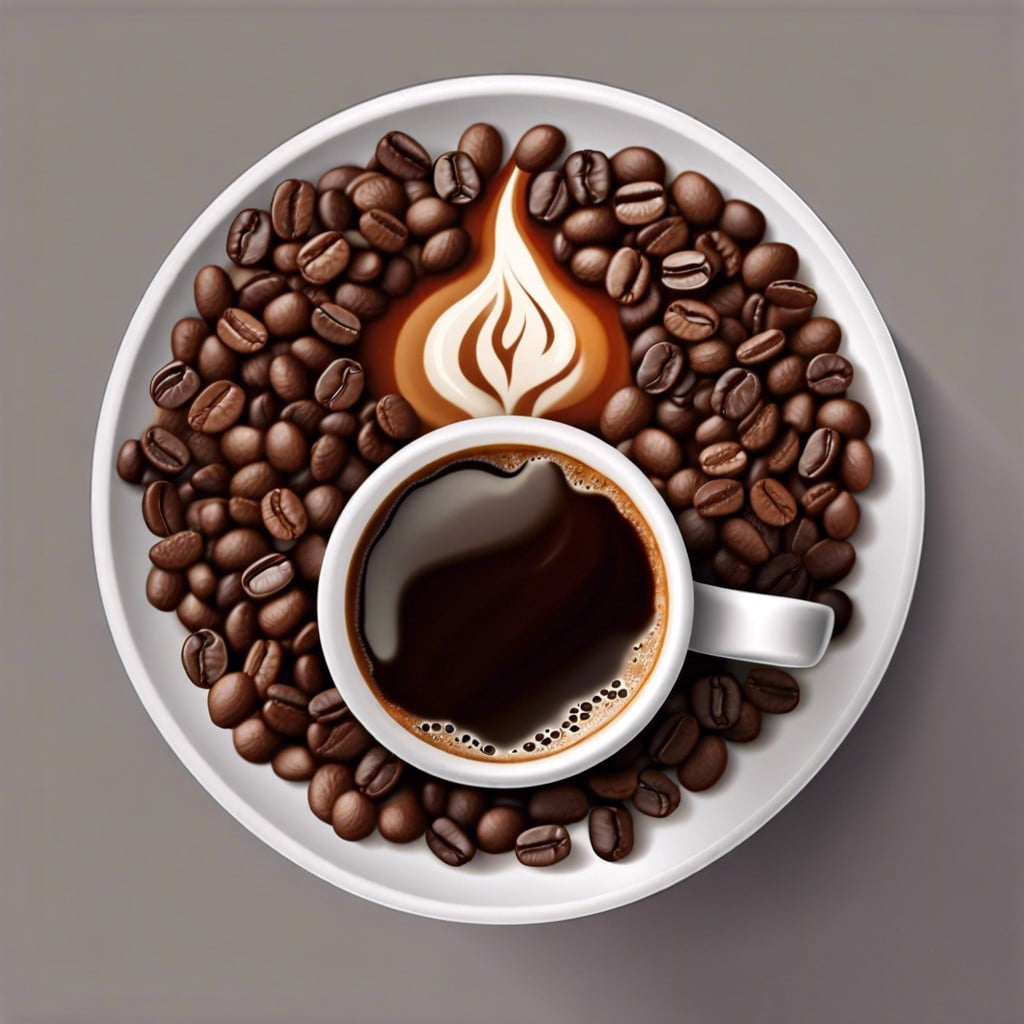Learn exactly how much coffee fits in a cup by understanding the standard measurement in ounces.
Ounces In a Coffee Cup: Defining a Standard Cup

A standard cup of coffee is typically 8 fluid ounces. However, this measurement can be misleading due to varying definitions across different systems and even between coffee shops.
- Measurement Systems: ** The U.S. customary system defines a cup as 8 ounces, but this isn’t universal. For instance, a cup in the metric system is about 8.45 ounces.
- Coffee Equipment: ** Many coffee makers come with their own carafes or cups, which often don’t align with the standard 8 ounces. A single cup of coffee on a machine may only equal 5 or 6 ounces.
- Beans to Water Ratio: ** Most brewing methods recommend 2 tablespoons of ground coffee for every 6 ounces of water. This ratio ensures a balanced extraction and flavor.
- Extracting Strength: ** More water or less coffee can make a brew weaker, whereas less water or more coffee yields a stronger cup. Adjustments can impact the number of ounces in your preferred cup.
Remember, knowledge of the standard measurements can significantly improve your coffee experience by helping you brew consistently delicious coffee at home.
The History Behind Coffee Cup Sizes
To understand coffee cup sizes, a dip into history is illuminating. The “cup” we often refer to has roots in the customary units used in the 19th century. Originally, a cup was simply a household drinking vessel; its size was far from standardized and varied from home to home.
However, as coffee gained popularity, the need for a standard measure became apparent. This led to the adoption of the 8-ounce cup as a yardstick for coffee servings, aligning with the standard U.S. cup used in recipes. It is essential to note, though, that in other countries, the “standard” may differ: for instance, one cup in Japan is only about 6.7 ounces.
Coffee houses and cafes later adapted these measurements to fit their menus and customer preferences, thus leading to an array of size options – from the petite espresso shot to the oversized travel mug.
Today’s variety ties back to the era when coffee culture began percolating through society, shaping not just how we drink coffee but the very vessels we sip from.
What Are the Common Cup Sizes At Popular Coffee Shops?
Dive into a local café or global coffee giant, and you’ll notice cup sizes that might seem like a riddle wrapped in a steamy enigma. Espresso shots typically come in 1-ounce servings, the foundational heartbeat of many coffee concoctions.
Moving up the scale, the Short provides a snug 8-ounce embrace, perfect for those preferring a stronger coffee-to-milk ratio. For a more balanced experience, the Tall clocks in at 12 ounces, a crowd-pleaser offering a harmonious blend of flavors.
The Grande, at a generous 16 ounces, caters to those with a thirst for a long-lasting coffee affair. And for the ambitious coffee aficionados, the Venti and Trenta serve up 20 and 31 ounces respectively, turning a simple coffee run into a grand journey of caffeine exploration.
Remember, these sizes aren’t universal, and ounces can become fluid when you cross borders or step into independent shops with their own sizing charts. Always peek at the menu beforehand or ask the barista for the lowdown—no one’s judging, we’re all friends on this coffee journey.
Brewing The Perfect Coffee
Getting your brew right starts with precision. Eight ounces is the traditional cup measurement, but mastery is in the details. Picture a smooth cup of joe with a golden crema – that’s your target.
For starters, temperature matters. Aim for water heated to 195°F to 205°F to extract flavors without bitterness. Use a scale to measure your grounds; for each six ounces of water, about 2 tablespoons of coffee should hit the spot.
Grind consistency is key. Fine for espresso, coarse for French press – your chosen method dictates the grind. A uniform grind promotes even extraction and a balanced cup.
Water quality can’t be overlooked. Filtered water is a secret weapon against undesirable, off-notes.
Finally, timing is everything. Espresso shots thrive at 20-30 seconds, while pour-over techniques can take a couple of minutes. Watch the clock; your tastebuds will thank you.
Remember, ratios are a roadmap, but your palate is the compass._experiment, adjust, and soon you’ll brew coffee that could give the local coffeehouse a run for its money.